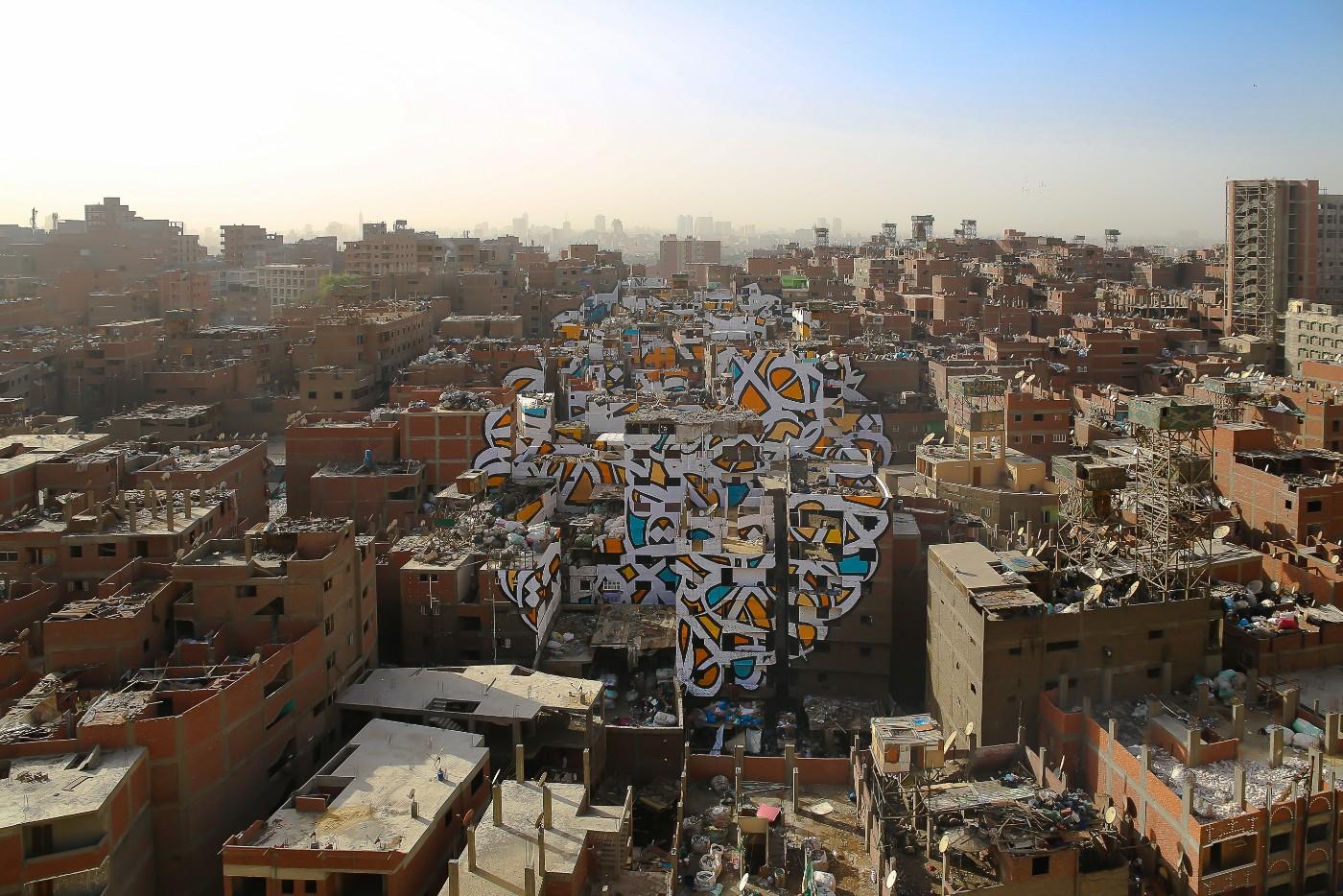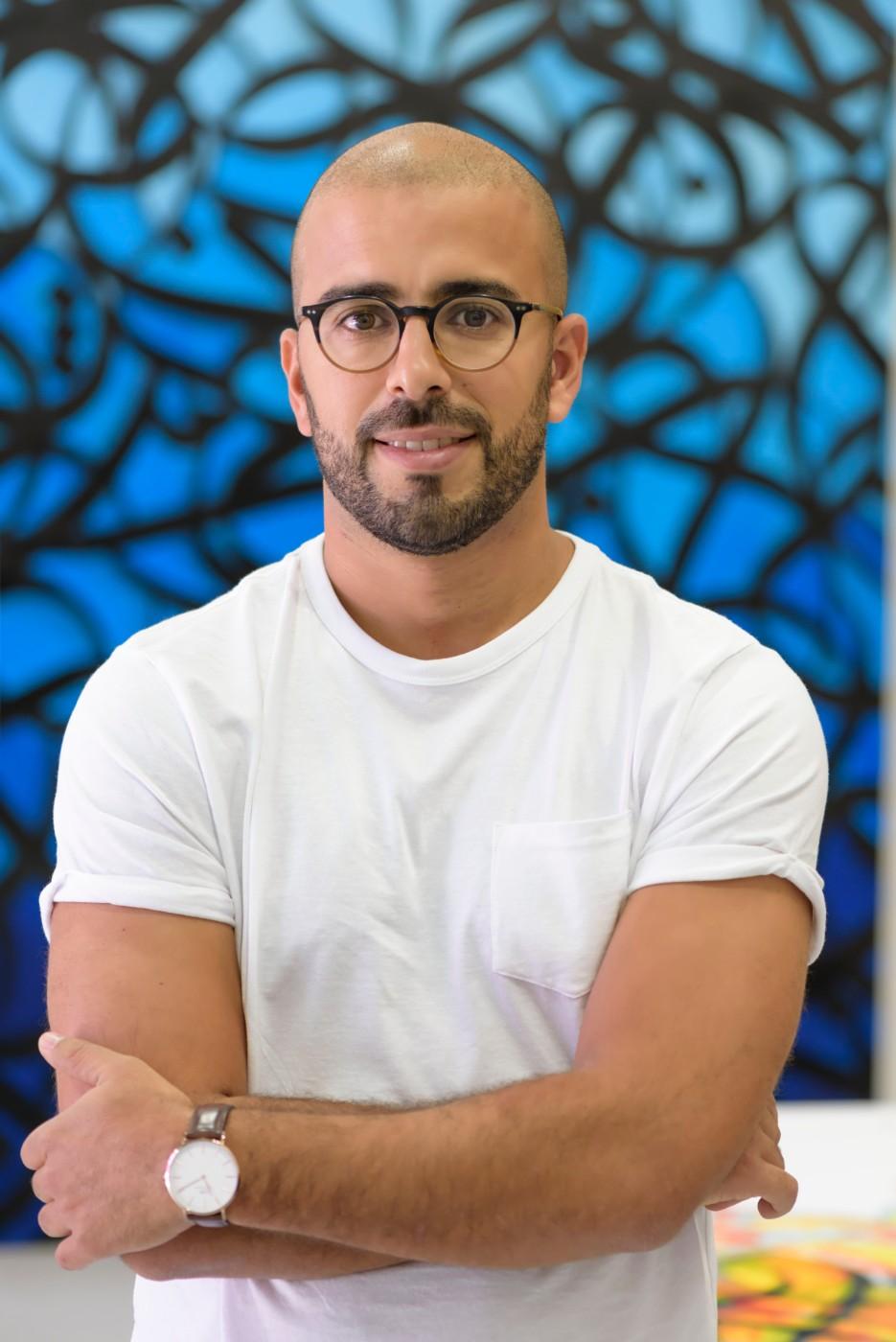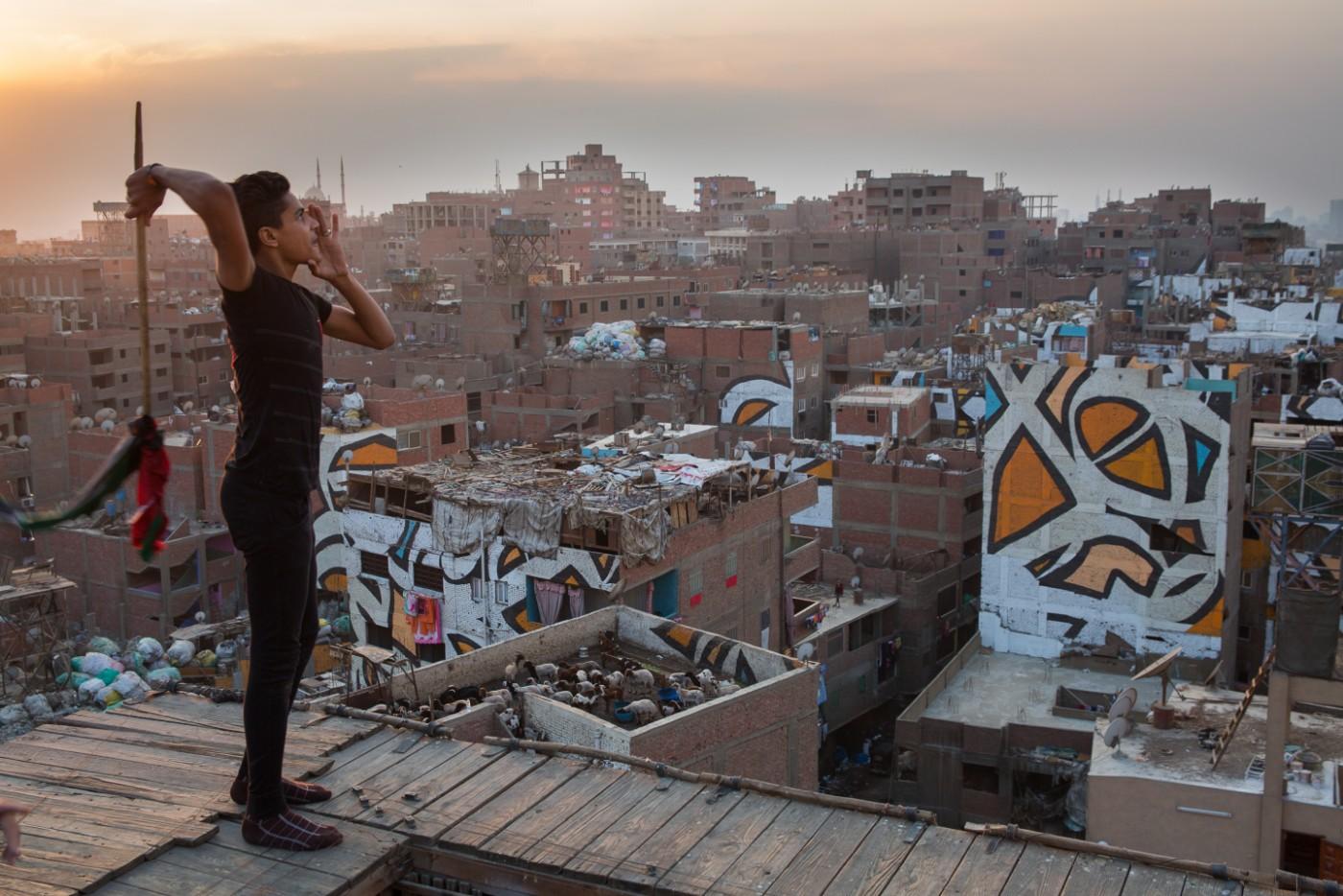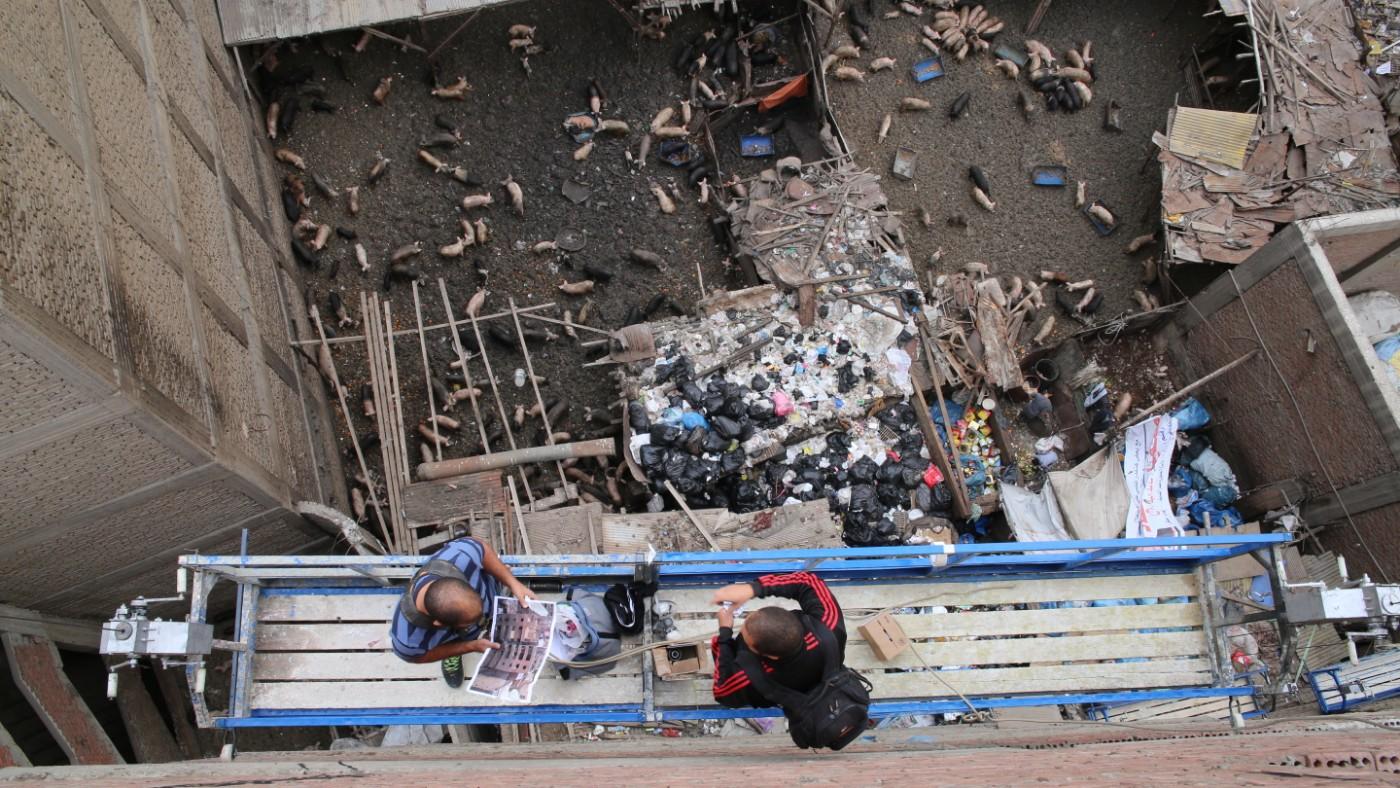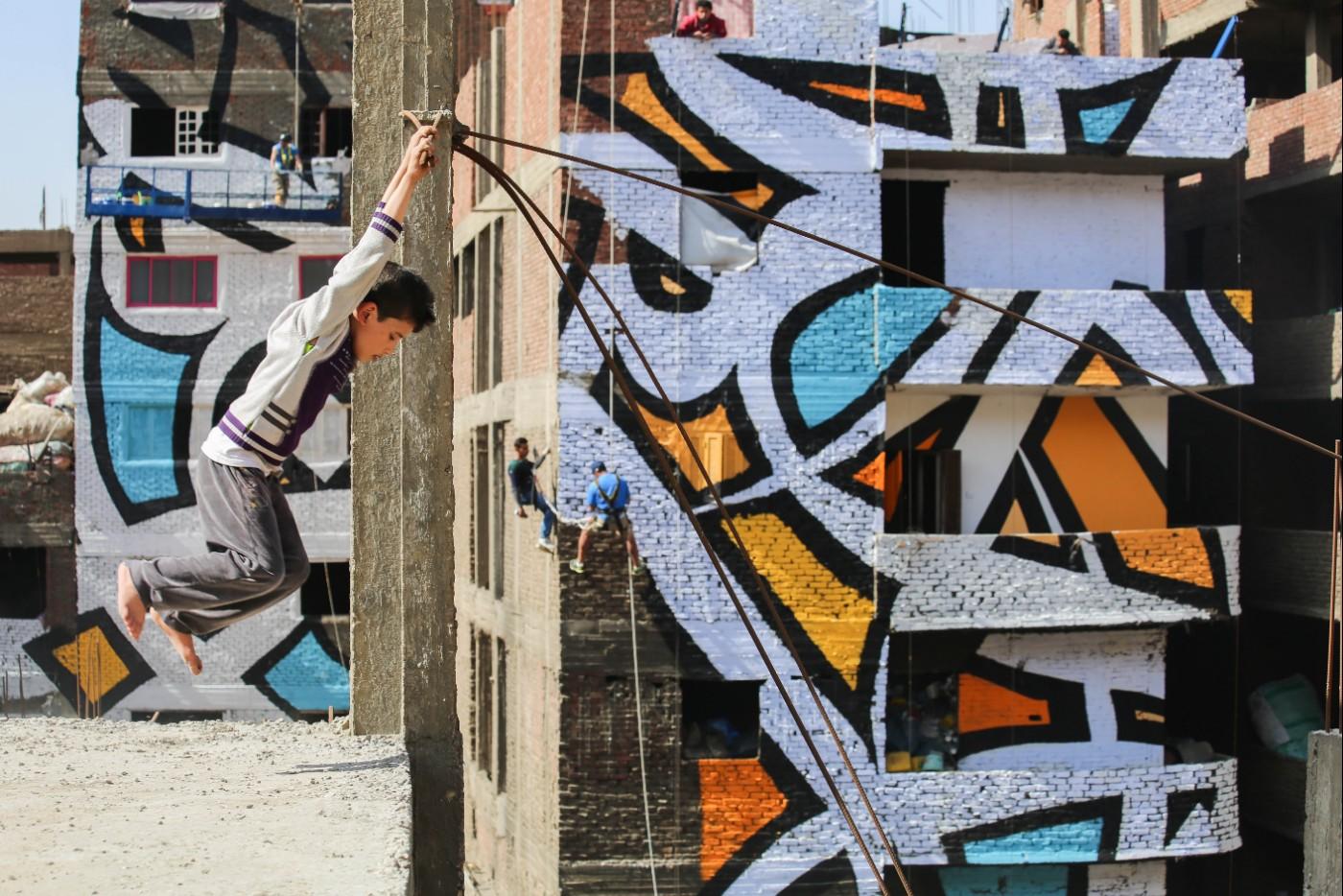Nicole Restaino: Perception must have entailed extensive preparations-site selection, long-term work within a community, production of a work of a massive scale. Can you briefly walk me through the process of conception to execution? How long does the research, community building, and preparatory phase last?
eL Seed: I was feeling stuck in my artistic practice, and my friend had showed me a picture of this neighborhood in Cairo years before. So, we booked flights and went, and we didn't know anybody. Initially, there was community suspicion, people I met would wonder why I was doing this, and who would really end up financing the project. But, eventually, I started to meet people, one after another. I then began the process of finding a message that would be useful to this specific neighborhood, the people in it. From there, it took about a year of preparation-getting to know the community, designing the project, and ironing out logistics. Once we started actually drawing and painting onto the buildings, execution took about one month.
NR: Your work draws on the past to speak of/to contemporary communities: you draw on the visual culture of Arabic calligraphy, the words of Third Century Coptic bishop mark Perception, you used the words of early 20th century poet Kim Sowol in your DMZ project. Can you tell us a bit about your relationship to history and your work's relationship to the same?
eS: It is important for me to do something from the community in which I'm painting. This ensures that the most immediate communities relate to, and are connected to, my pieces. As you know, many—though not all—of the garbage collectors in Manshiyat Naser, the neighborhood surrounding Perception, are Coptic. So, I chose the words of a Coptic bishop to anchor the piece. With history, though, there is also a universal dimension. We all, we all have histories, we all connect to the past. So, in this way, the specific becomes the universal, and the ability to relate to my piece opens up indefinitely.




